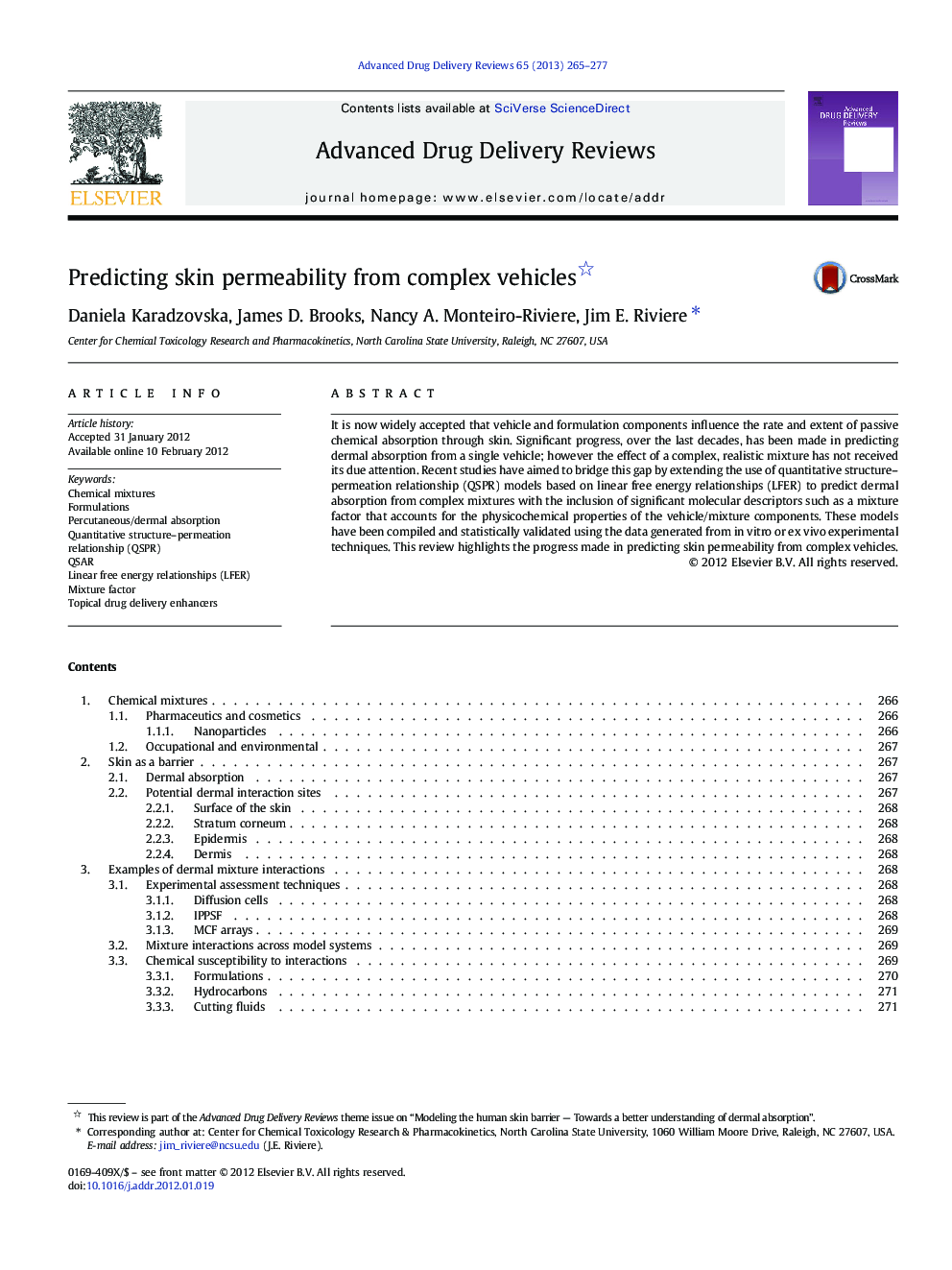| Article ID | Journal | Published Year | Pages | File Type |
|---|---|---|---|---|
| 2072138 | Advanced Drug Delivery Reviews | 2013 | 13 Pages |
It is now widely accepted that vehicle and formulation components influence the rate and extent of passive chemical absorption through skin. Significant progress, over the last decades, has been made in predicting dermal absorption from a single vehicle; however the effect of a complex, realistic mixture has not received its due attention. Recent studies have aimed to bridge this gap by extending the use of quantitative structure–permeation relationship (QSPR) models based on linear free energy relationships (LFER) to predict dermal absorption from complex mixtures with the inclusion of significant molecular descriptors such as a mixture factor that accounts for the physicochemical properties of the vehicle/mixture components. These models have been compiled and statistically validated using the data generated from in vitro or ex vivo experimental techniques. This review highlights the progress made in predicting skin permeability from complex vehicles.
Graphical abstractFigure optionsDownload full-size imageDownload high-quality image (149 K)Download as PowerPoint slide
